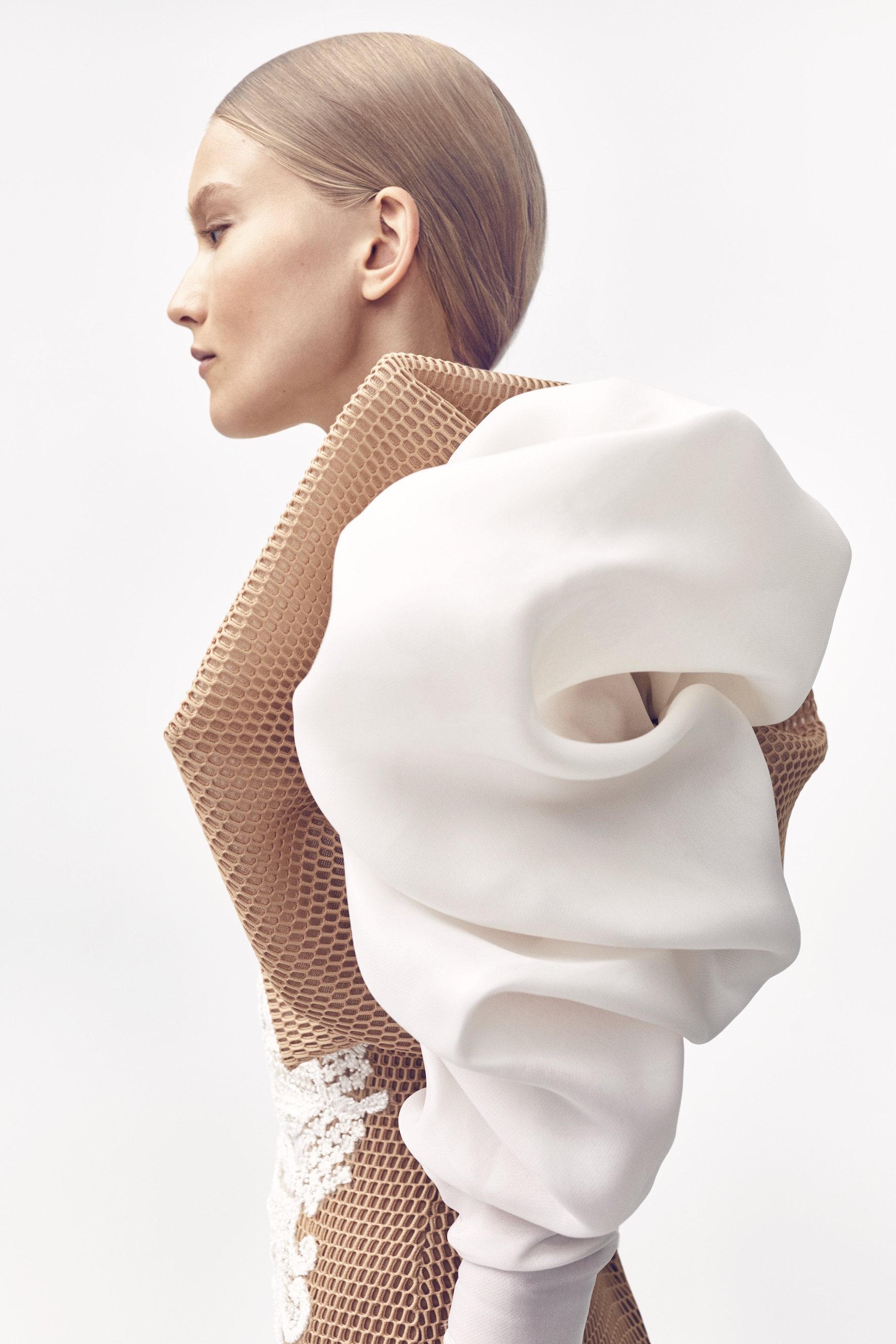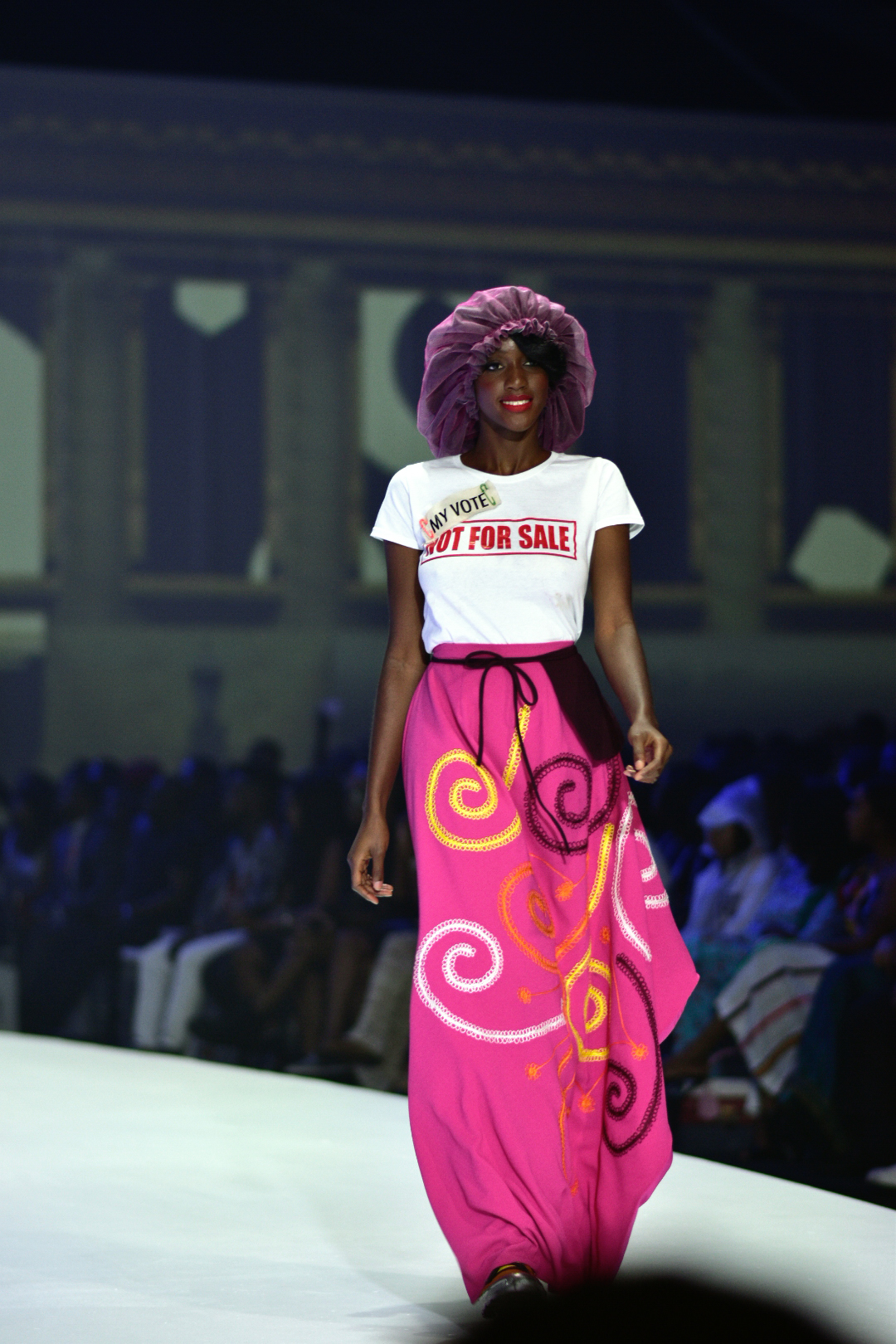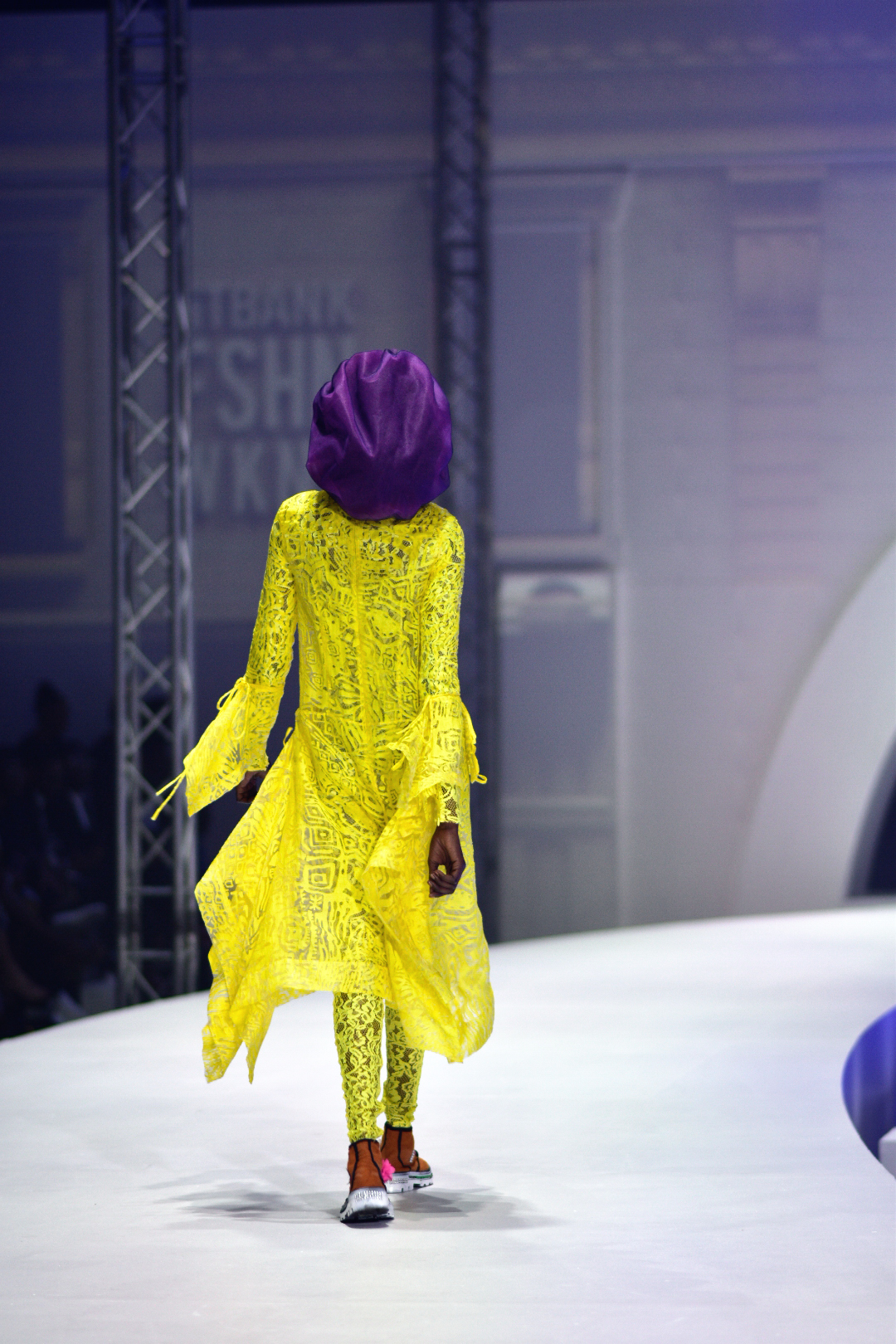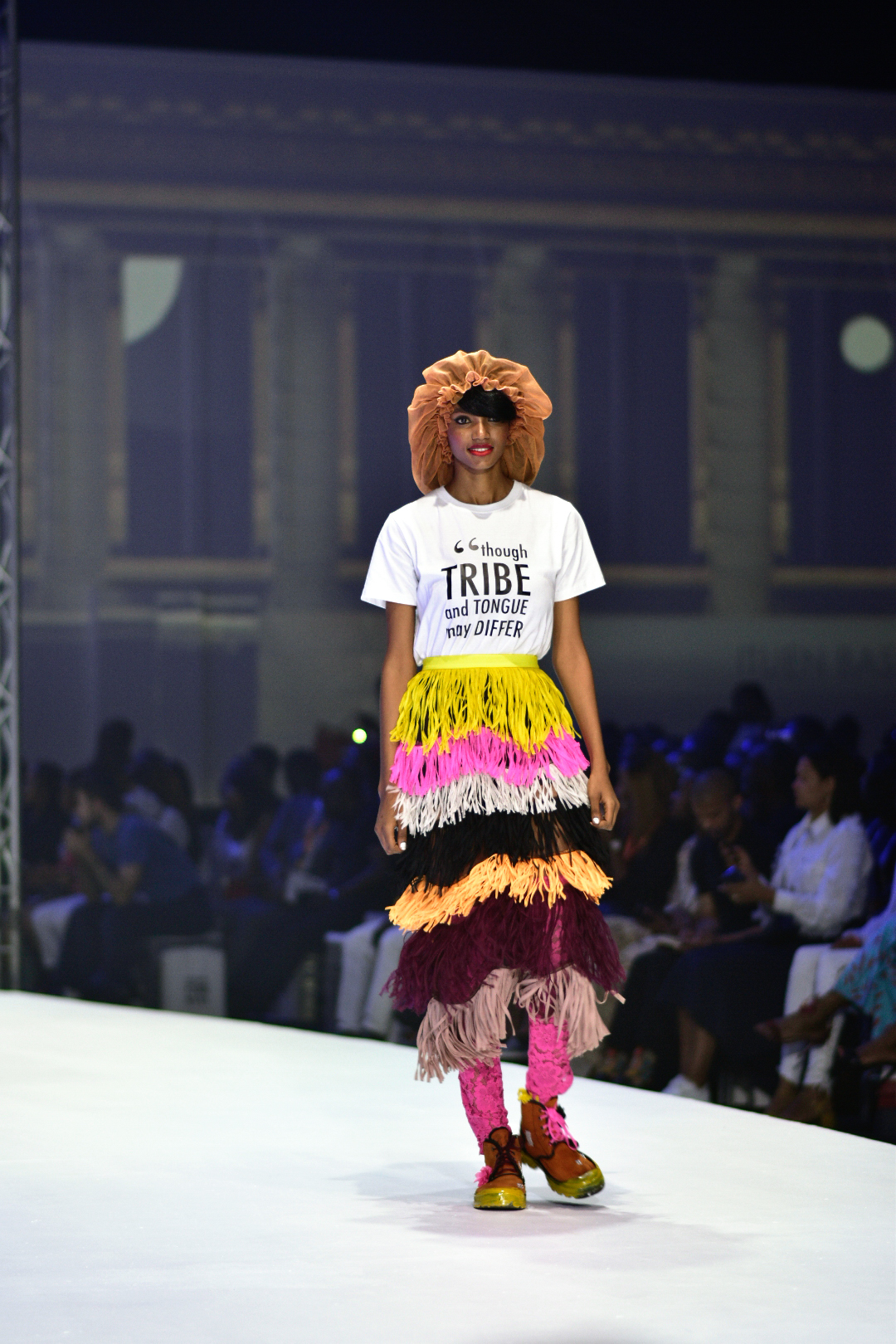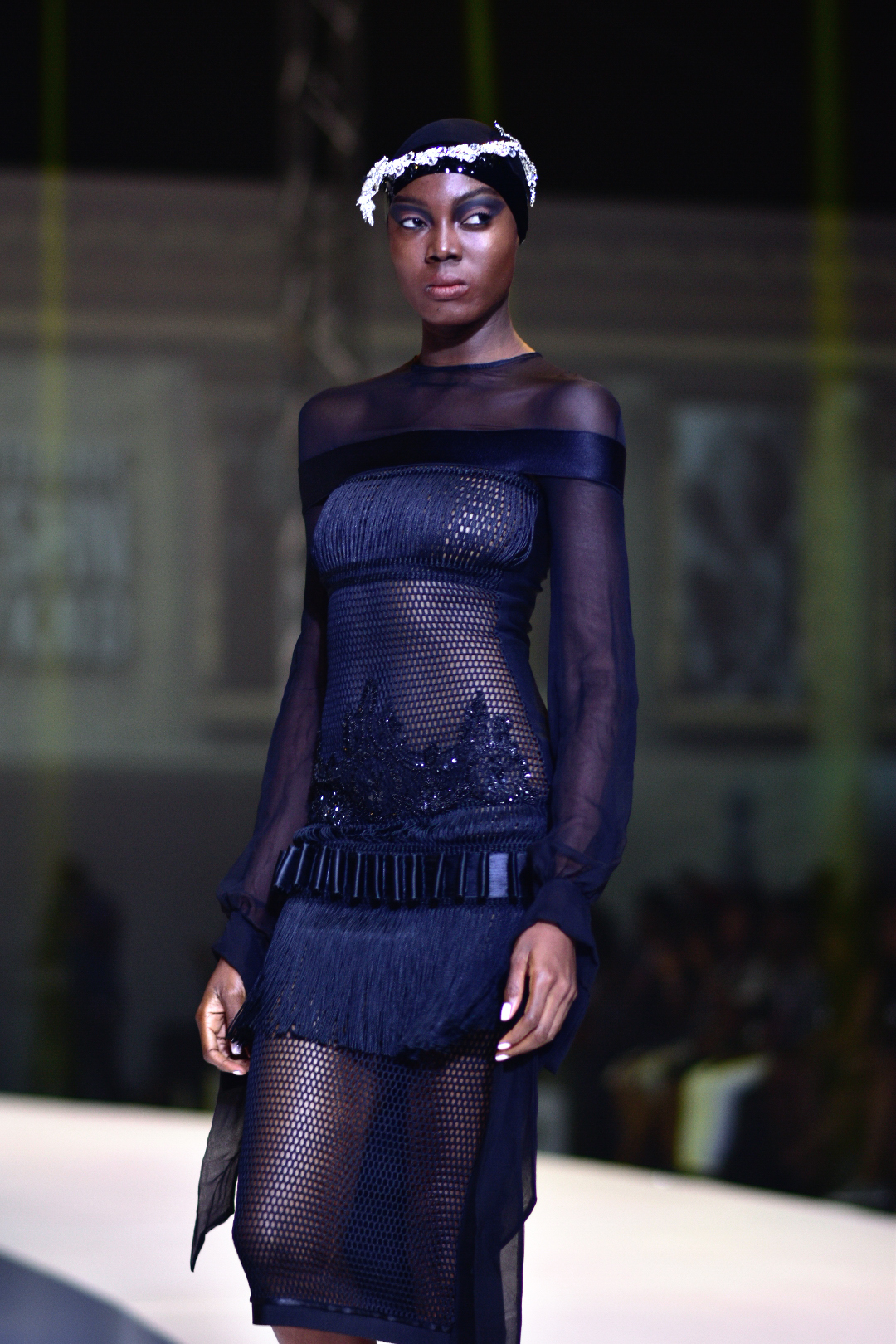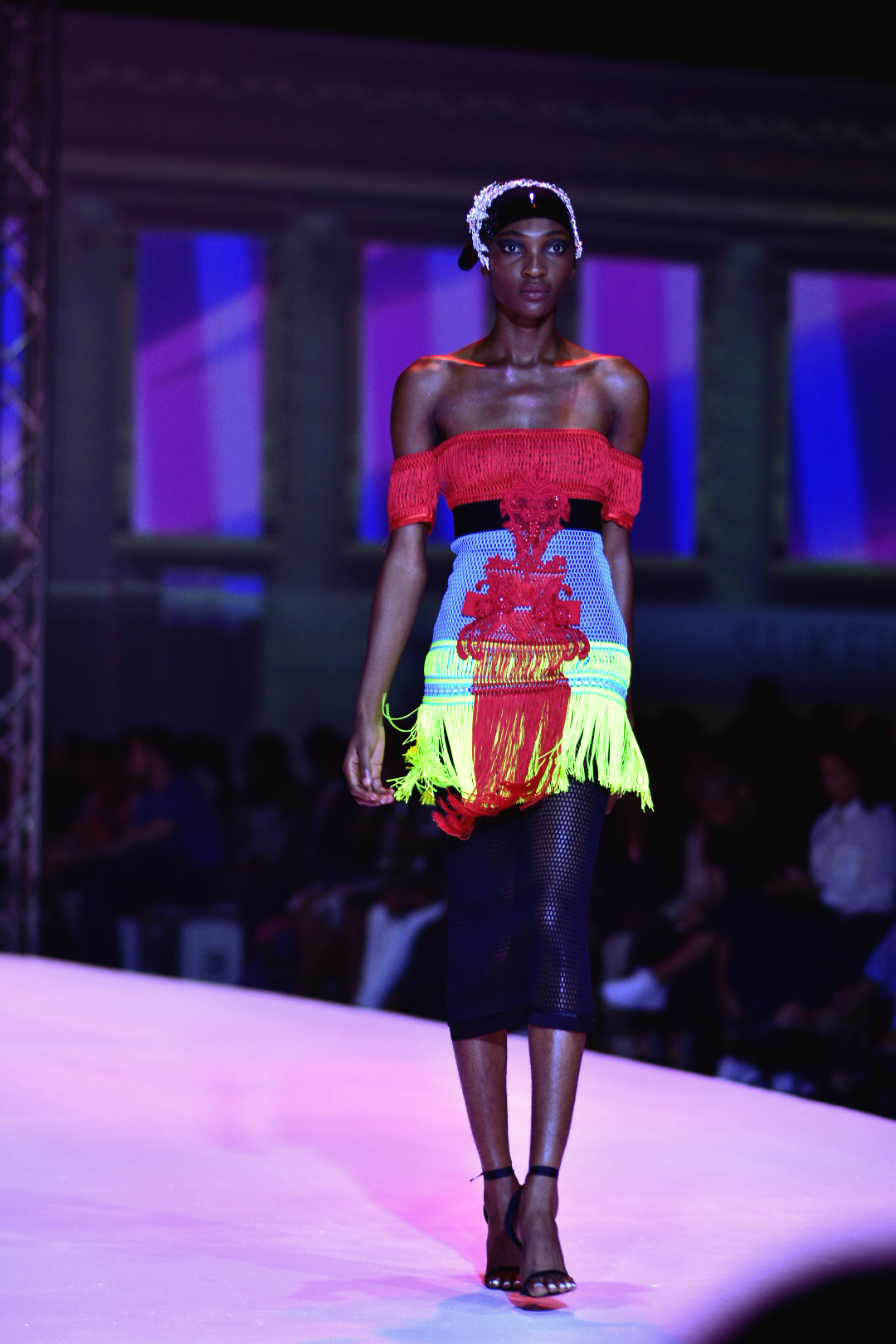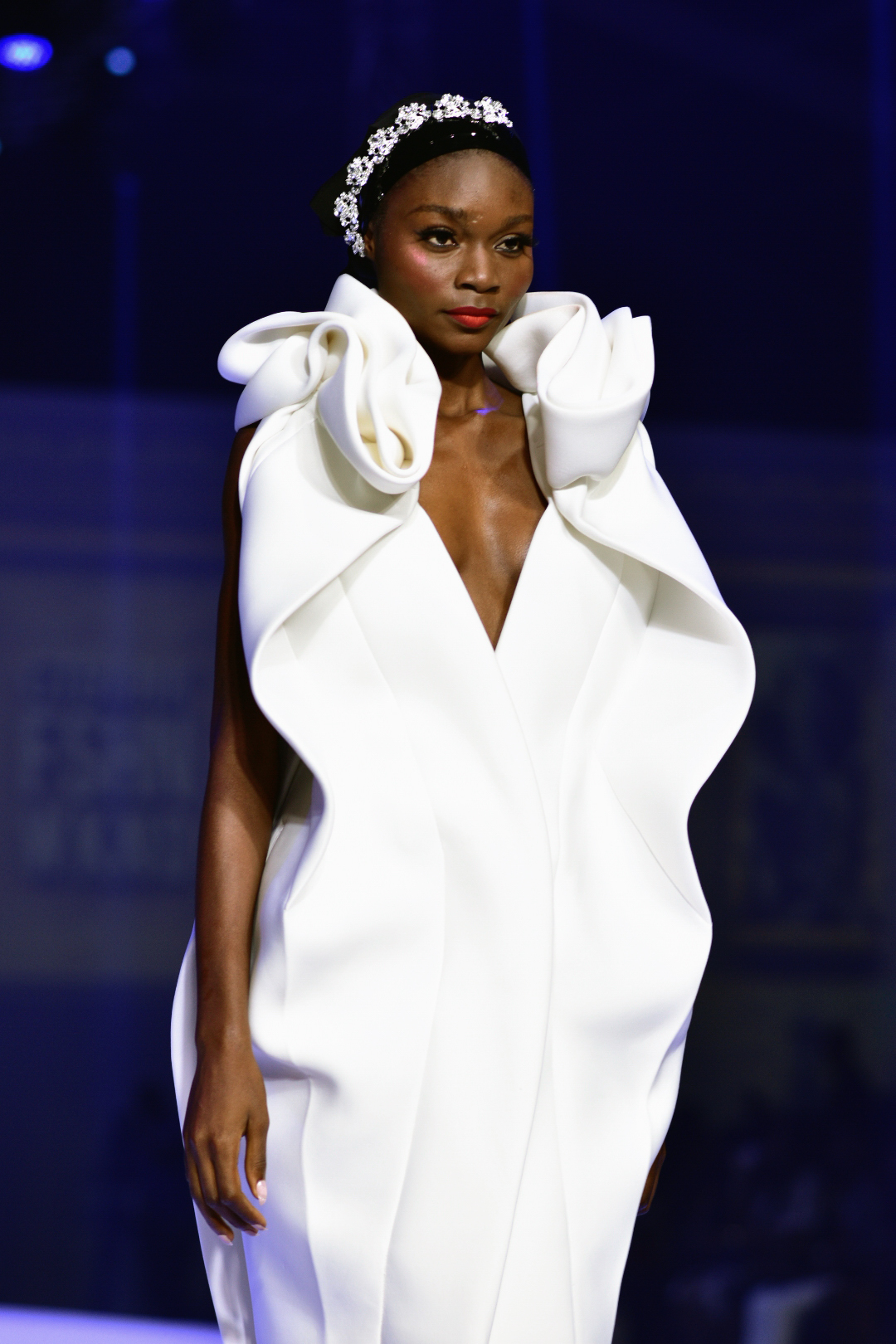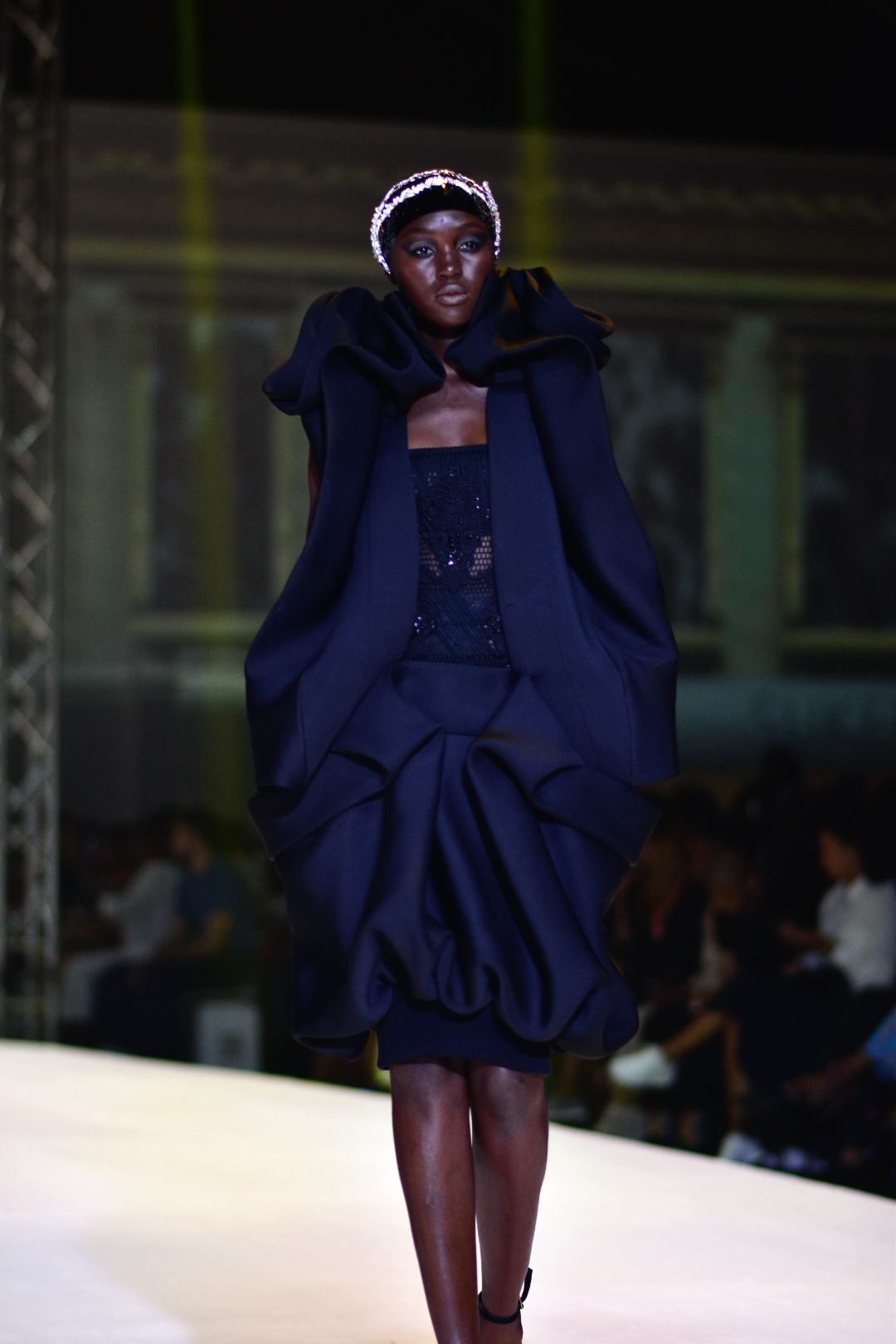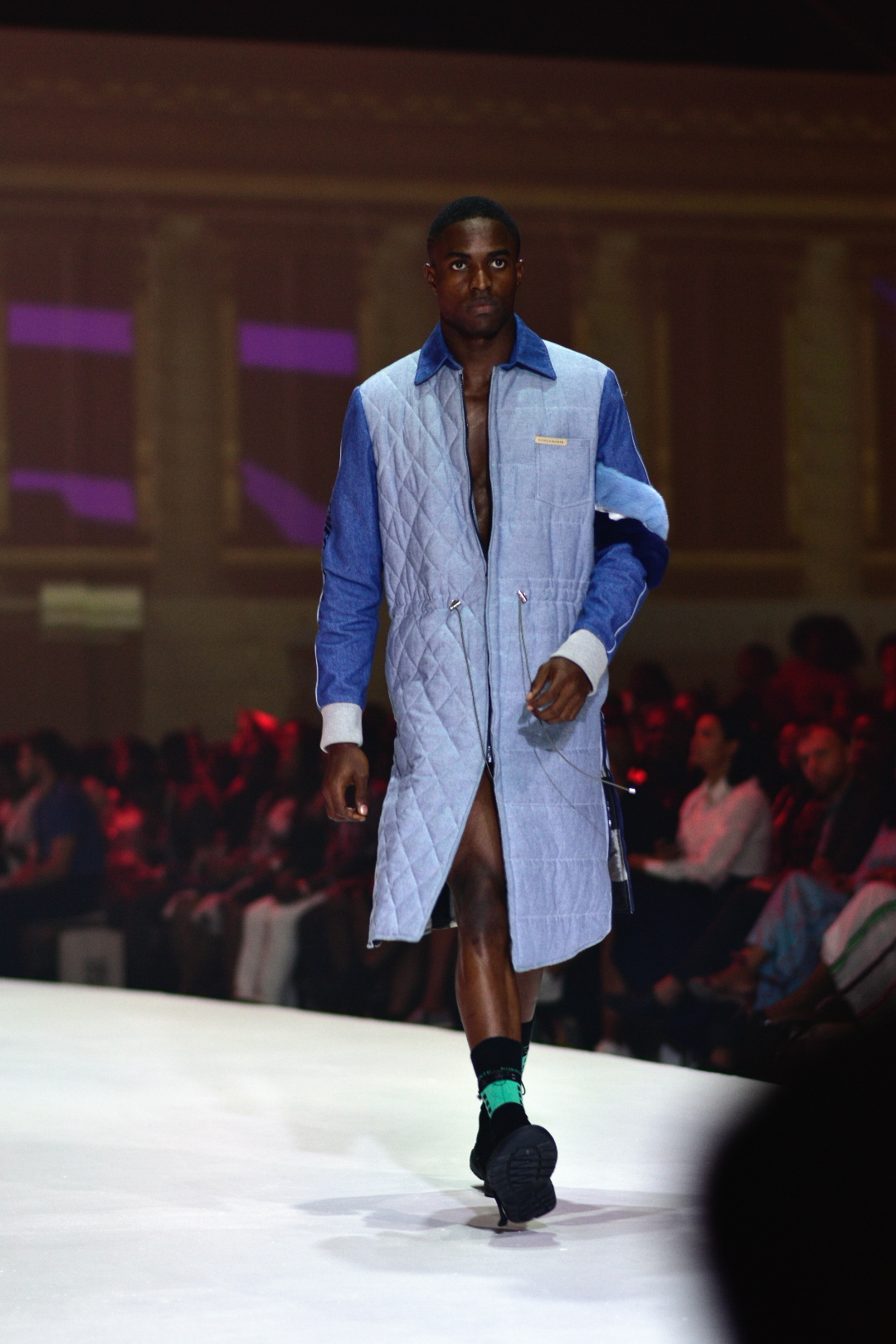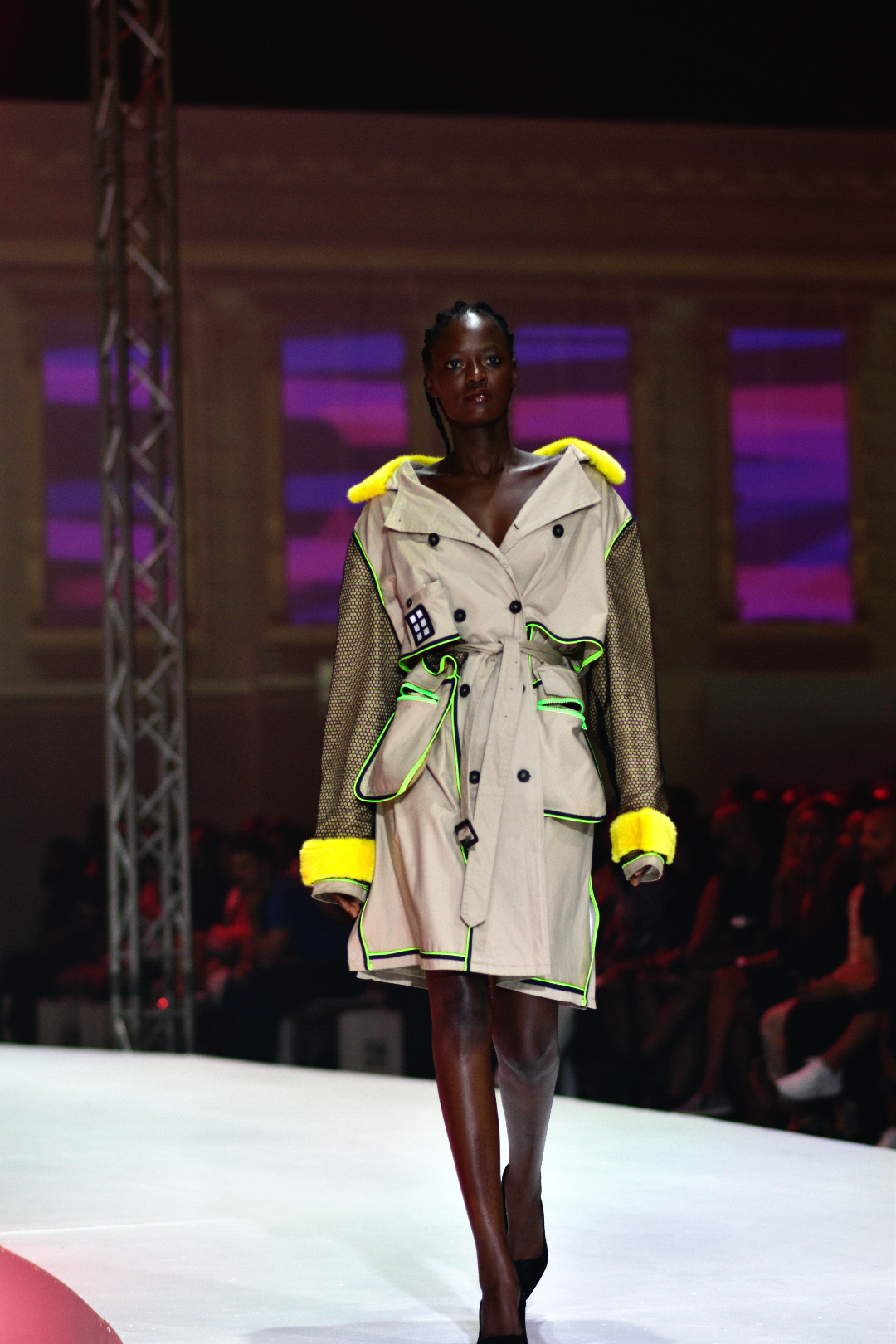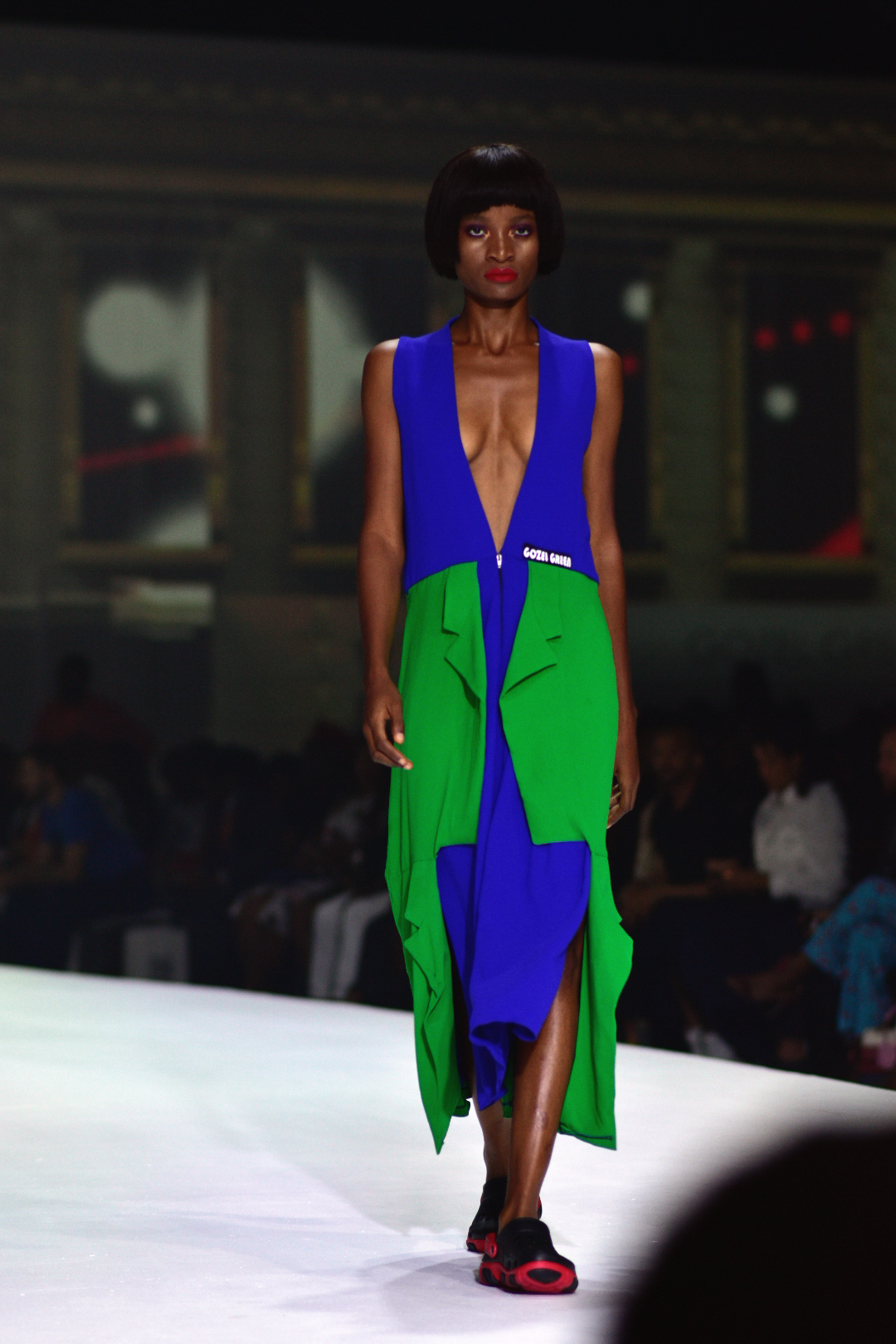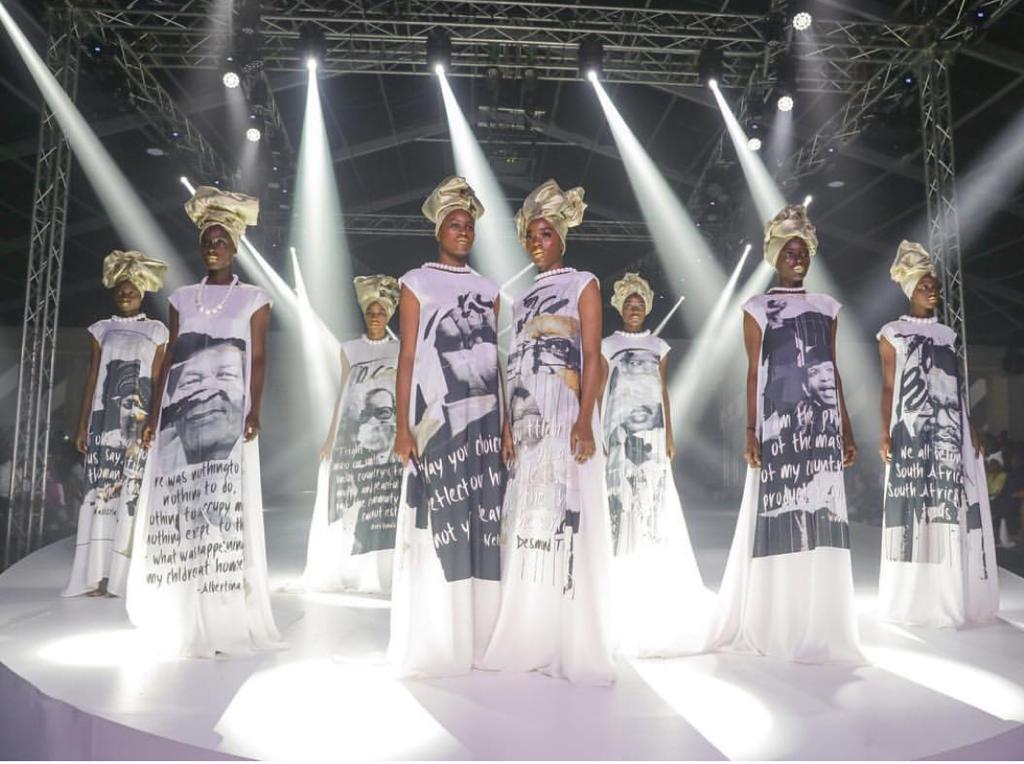Finding time over Zoom to speak to Omar Salam, the founder and creative director of Sukeina, is a tricky process, but for the best reasons. In spite of the world being in the grip of a global pandemic, things have never been busier, Since launching Sukeina in 2012, his has been a giddy, upward trajectory. Critical acclaim and impressive press notices, including a multi-page editorial in the prestigious US Vogue September 2020 issue, iconic supermodels such as Naomi Campbell and Natalia Vodianova as early adopters of his signature pieces and stockists globally, point to him having created a fashion house with firm commercial and creative foundations, that is built to last. But unsurprisingly, that is not the whole story and he is refreshingly candid as we speak in the company of Dimeji Alara, who is not only his fashion director but his aesthetics collaborator and visual touchstone, about the making of this thoroughly modern African luxury brand.
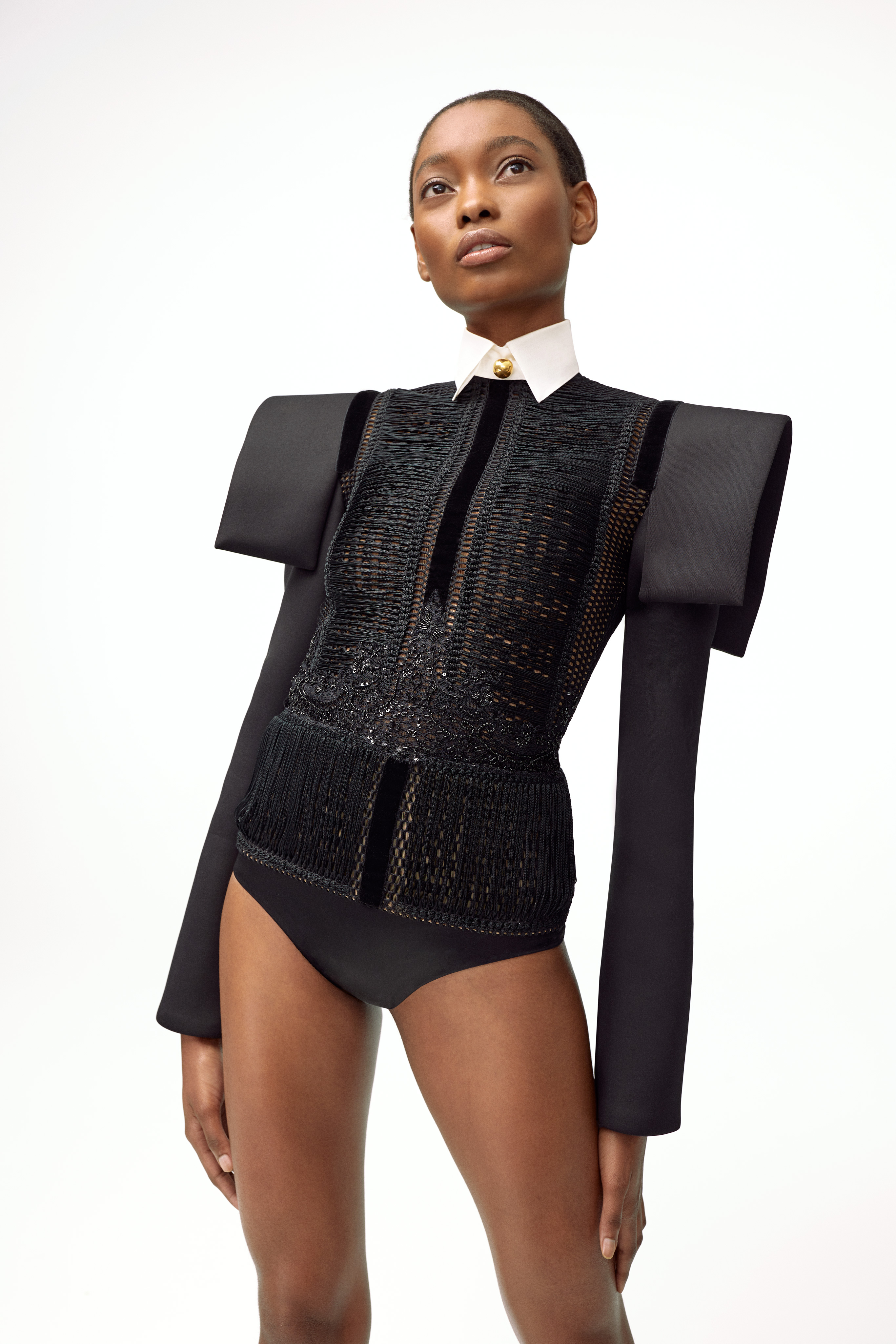
“What I was really interested in wasn’t creating a fashion brand, it was telling stories.” Initially Salam was on a path to film-making, but he abandoned his movie ambitions when he noted the inherent and structural prejudices built into the industry. He expands “two years into my programme I realised I no longer want to be in screenwriting, because the opportunity wasn’t given to all and only a handful could really get a platform.” With clothing he saw an alternative form of communication noting “fashion was quite interesting at an ornamental level but mainly I was drawn to how quickly every single person was able whether they were conscious of it or not, to tell stories about how they felt at that very moment through dress.” It is an oft noted trope that what we wear is the most potent non-verbal communication we share with the world and also with those we meet on an inter-personal level. Even an active disinterest is a statement of intent. For Salam, the idea of rather than convincing people to part with two hours of their time in a darkened auditorium to engage with his vision, but instead co-opting his vision to reflect something of themselves was far the more intriguing direction to pursue. Indeed, film’s loss has proven fashion’s gain, but not without some similar principles in play of narrative arc, dramatis personae and heroic quests being sewn into each piece he creates.

Of Origins and Mandates
Fashion loves an origin story, and in fact often demands that ones involving people of colour are even more dramatic. Who can forget the (very much debunked because it patently wasn’t true) rumour of supermodel Iman having been plucked from obscurity in her previous role as a tribal herds-woman? She is in fact the daughter of well-travelled, educated and urbane Somalian diplomats. Salam has been both lauded and somewhat misrepresented in the bid for editors and writers (often western based or educated) to place him in a neat box assigned to black creatives in terms of both their roots and their consequent influences. `’I am so happy that you are giving me the opportunity to perhaps try being a bit more clear. I often get asked what influenced you? What inspired you? And while it has become such a normal thing to ask a creative or a designer and we rush into answering… There are many many things that come with you that are prior to you and are sometimes beyond your understanding of understanding, So I just want to put it out there that I am an African man that was partially raised in Europe that in adulthood is working in the American space, that speaks Wolof but also speaks French but also speaks English, that works with customers that are Japanese but also some who are Arab and American and European and I am very very enthused and curious about the world.” Dimeji is silently nodding in agreement at what Salam is boldly articulating – that Africa and Africans are not one singular entity or set of experiences and levels of exposure. That not every African’s background includes abject poverty, a paucity of educational opportunities and knowledge and, spoiler alert, requires a dash of fairy-dust by way of western media acknowledgement. If anything, that Salam still finds himself being viewed as an anomaly, speaks to unconscious biases that still exist, in spite of the Summer of Race Reckoning that was 2020. Some writers have been too speedy to place him in Senegal or their own ‘tribal’ version of it, when there exists layers of nuance that are blithely ignored due to his race. The multiplicity of locations both for himself and also for his inspirations is not the exclusive domain of a designer living in a particular locale, or colour. It is in fact reflective of the 21st century, where prior to the pandemic affordable travel coupled with the digital capabilities to travel anywhere via your phone means that inspiration can and is picked up anywhere, that curiosity can be readily sated by all, and that clients can and will come from far and wide.
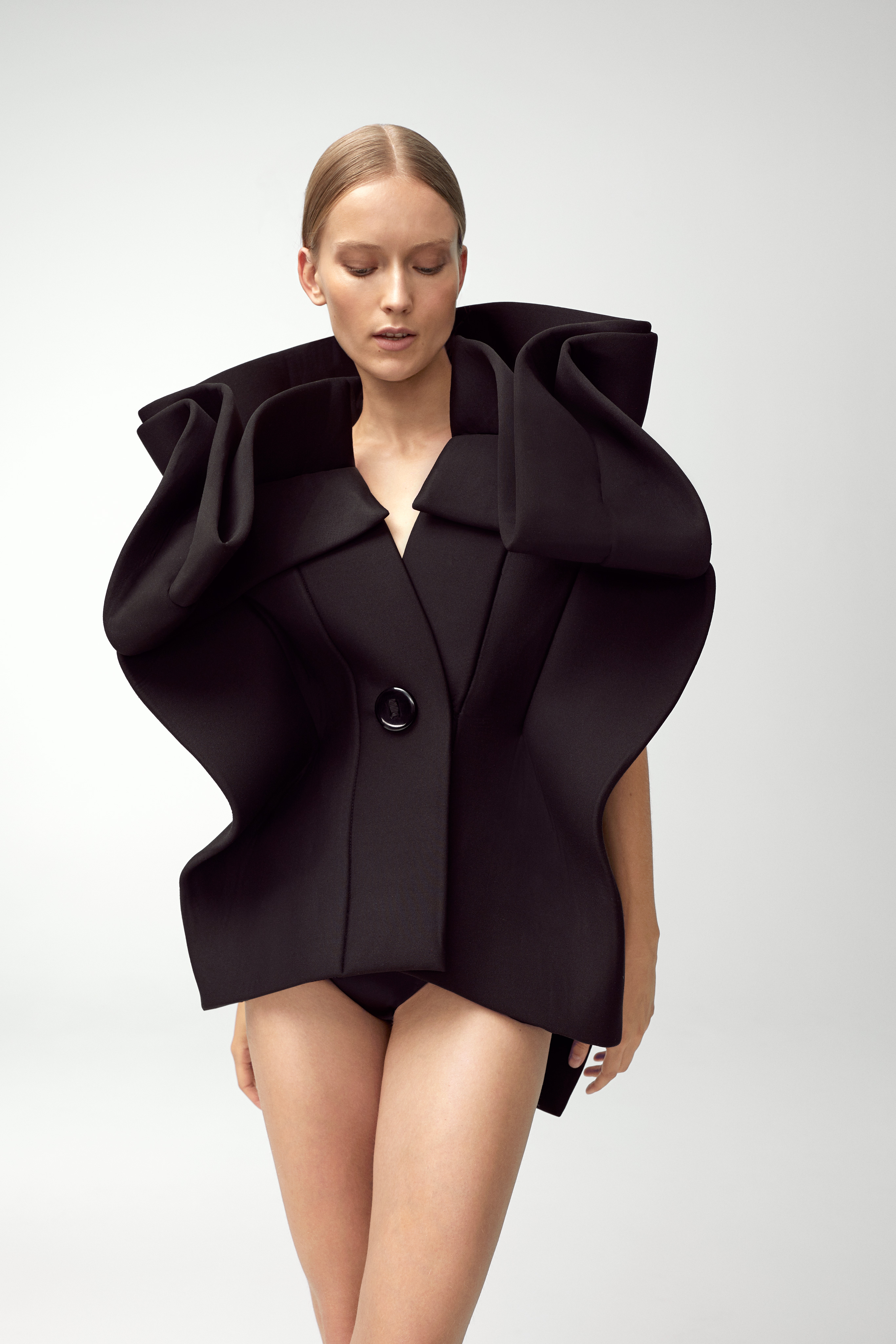
Sukeina is in fact named after Salam’s mother and he adds there are further etymological roots of the name itself: “ when I would ask my grandmother the question what does Sukeina mean she would say it means ‘bright light’ and I would be like okay. And then she would say, ‘When a room doesn’t have a table it is table-less but you can still sit, when it doesn’t have a chair, it is chair-less yet you can still stand’…and she talked at length on the importance of perspective and perception and she felt that when there was no light everything goes missing. But when there is light in the room you can see where the chair is…where everything is and only then can you see the value of all. And I was fascinated by the kindness of it [of the light and it’s role]…That notion kind of stuck with me when the time came to create a company. Not only did I like very much the wording and meaning around it but also the person that I got to know very early in my life was kind of that. While my father had a very important position in the UN and in government and whatnot, my mother was kind of the glue behind it and added things, removed things, strategised. In the end she made him shine.” But beyond being a personal eulogy to the essence of his mother, Salam expands his thesis wider adding : “Sukeina is shining a light on what women truly are and have always been and aren’t always perceived as .They jump very quickly into the everyday motions…and don’t get a chance to turn the focus on themselves and say who am I, what am i, what am I outside of what I do? And what Sukeina is trying to be in a woman’s closet is to create armours, to create outside shells, create directions, create stimulus that remind a woman how incredibly necessary, how incredibly pivotal, how incredibly important and how incredibly key she is, has been and will always be.”
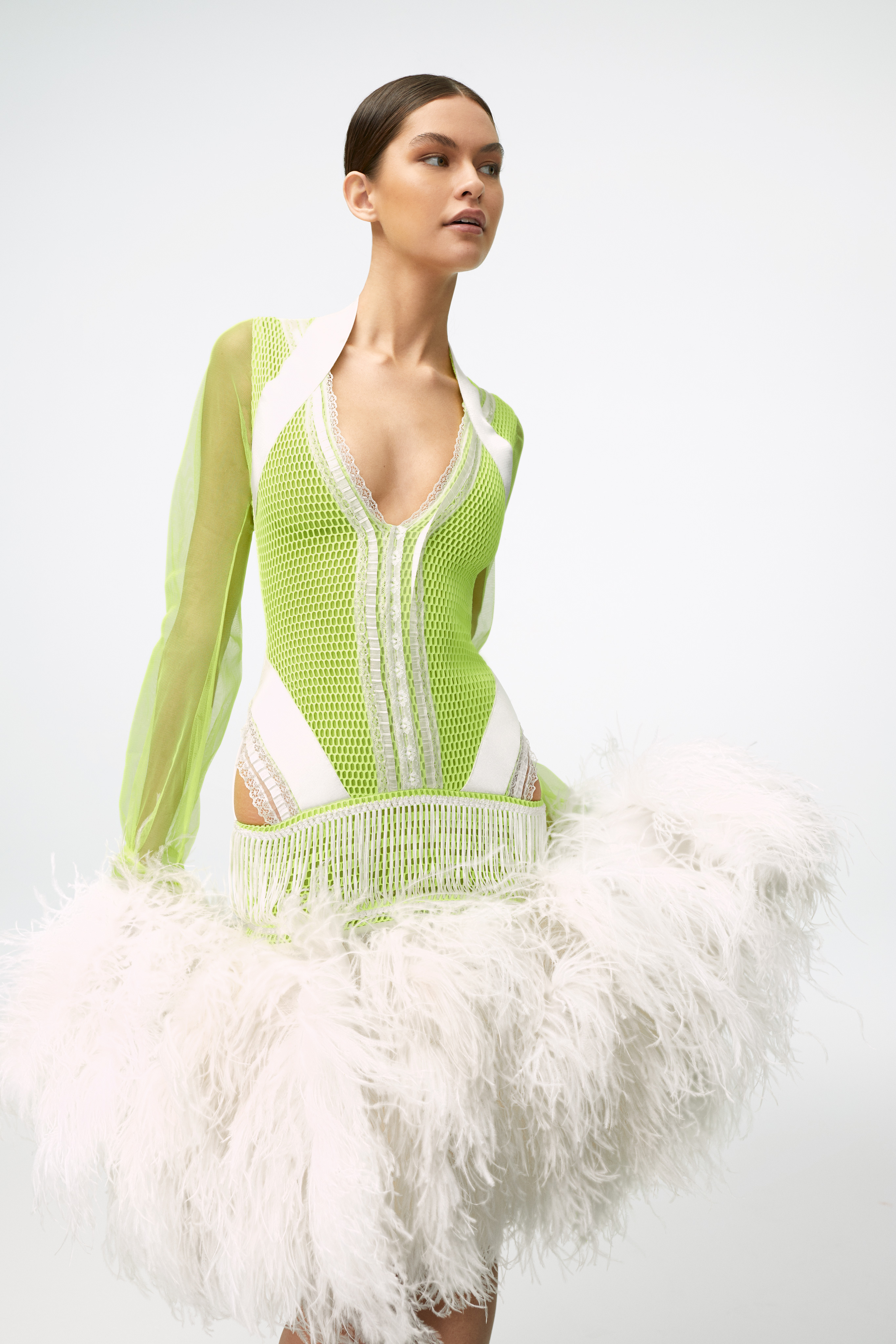
With a brand mandate that is more closely aligned to a broader manifesto of equipping women with the tools for self expression, providing them with aesthetic permission to explore their many selves, and most critically of all, demand that they are fully celebrated as a result, it would be easy to ask pithily how do such lofty ideals and goals translate into apparel. But Salam is not one for hyperbole or empty platitudes and in the collections one sees his creative aims and cultural objectives being fulfilled one piece at a time. Initially lauded for his occasion wear, he steered clear of obvious cliches such as using classic luxe fabrics exclusively. Many of the pieces were made of a silk neoprene. It was an interesting choice as neoprene is often utilised in protective garments and Salam’s decision could be seen as both a comment on a woman requiring her apparel to act as the aforementioned armour, but with the choice of silk blend, still needing to feel luxurious. Contrasting and compelling juxtapositions are another notable feature in Sukeina collections: pieces are sometimes adorned with ostrich plumes, adding flamboyance and an unapologetic celebratory air to proceedings. For Salam whether one is off to a Red Carpet event or celebrating a milestone birthday with family and friends, the pieces act as a frame for the memories made, but must elicit an interior emotion in their movement, feel and ultimately the wearing. Furthermore, in an age where women not only demand but also expect sexual autonomy, even the more overtly sexy pieces hint at revealing oneself on your own terms with tea length dresses with cut aways at the hip bones and sheer panelled body suits with opaque ribbon effect panels. The overall thesis is one of exploration and as Salam says of the Sukeina woman, “she is someone curious about herself but more curious about the world than she is judgmental of it.” It thus follows that clothes that play on silhouette, notions of opaqueness and transparency and hint at power and vulnerability would become wardrobe staples for such a woman.
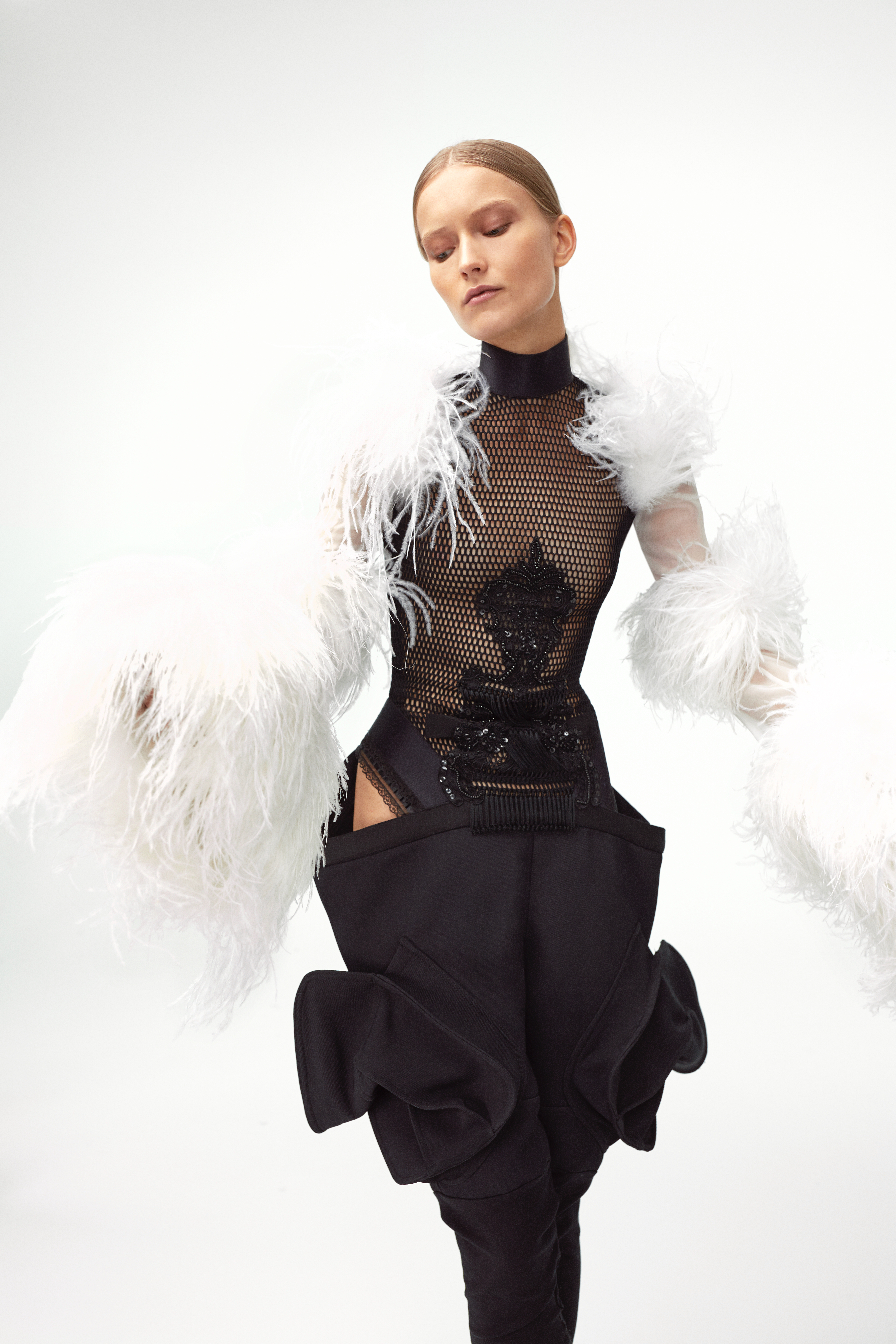
Curiously, the ‘Sukeina Woman’, compartmentalising and deconstructing her further, is something that Salam has intentionally avoided, both in his head while designing and in interviews. Like his own personal journey, he does not see customers fitting one sort of lifestyle, location, age or interests. Proof of such was a private soiree held in his honour in Lagos in 2018, when he showed at GTB Fashion Weekend, that intriguingly brought together a cross section of the city’s fashion tribes and beau monde all of whom were as keen to see the clothes and purchase them. For him, the brand does not ascribe to a narrow set of normative concerns and nor does its clients. What he does however, return to are the evolution of notions of self and identity: “I use as the cue the area of emotional dimensions of a woman. So we go back to the woman and ask, is she sexy? Is she straightforward? Is she strict?… My job is to avail myself as a translator of what a woman feels or wants to feel…to display the rhythm of the woman or the vibrato around that woman, whether she is feeling sexy, or feeling motherly or wants to be covered or elusive.” Seeing women as multifarious indicates that Salam is following a recipe that guarantees longevity as many brands get stuck in a design brief silo, speaking to an increasingly smaller set of people or disconnecting altogether with the wants and needs of clients both existing and potential as their lives evolve and locus of concerns changes accordingly. In widening the lens of moods and actively not ascribing to the ‘African fashion’ tag, which in many instances, particularly its most recent iteration, can prove problematic, Sukeina has deftly sidestepped a creative and commercial cul de sac.
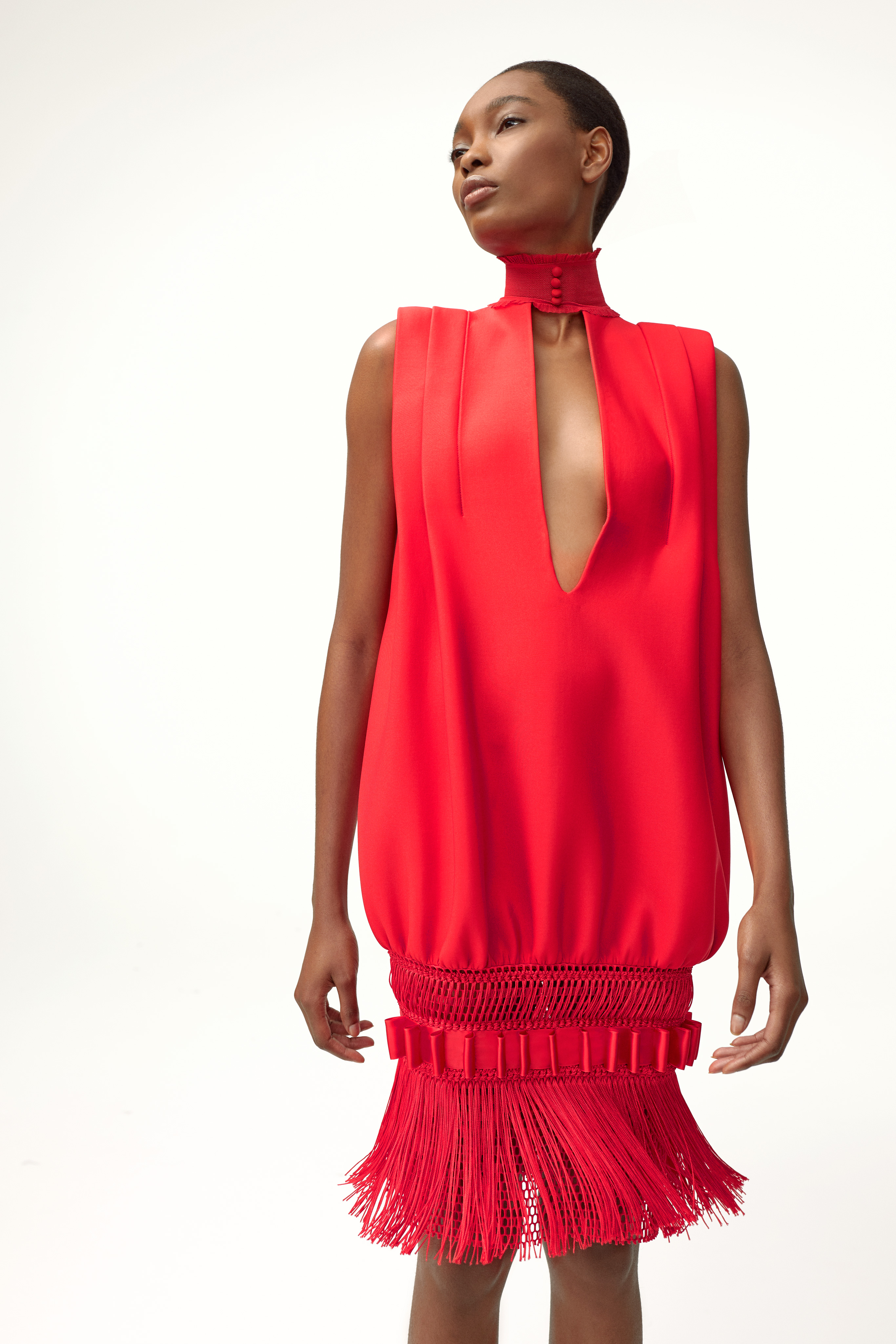
Watchwords and Future Plans
We alight on Salam and Alara’s partnership – one which has seen them working together to build upon Sukeina’s initial success and widen its reach and appeal. Although hailing from different disciplines in the fashion system: Alara is Nigerian and was the former editor in chief of Elle South Africa and a noted fashion stylist in his own right whilst Salam has operated firmly in the design space, there are clear synergies: both men are West African Parisiennes now situated in New York City with a clear sense of self and a shared passion for steering conversations forward on African design and aesthetics via Sukeina. One recent move has been distancing themselves from the demi-couture and couture labelling that followed the brand from the outset. Alara expands “We are exploring daywear. Because a sweater, a simple white shirt or a pair of pants can be special.” To buttress the point Sukeina recently created a capsule winter collection entitled Silex that saw them reinterpret winter-warmers for the woman who cares for silhouette and construction as much as she does for heat retention. It was an expansion of a day-wear exploration that had already been seeded in the Spring/Summer 2021 collection that were an immediate hit. The Boyfriend Sweater gets a luxe formal makeover with contrasting copes and sleeves and stiff white collars, mesh pencil skirts could be as easily worn to a meeting or cocktails and leggings are removed from planet basic via the clever inclusion of vertical panels – a trick that also lengthens and slims a leg’s appearance. It also chimes with Salam’s wider mandate of being able to enter a woman’s consciousness and propose ensembles that reflect her mood or greater intent.
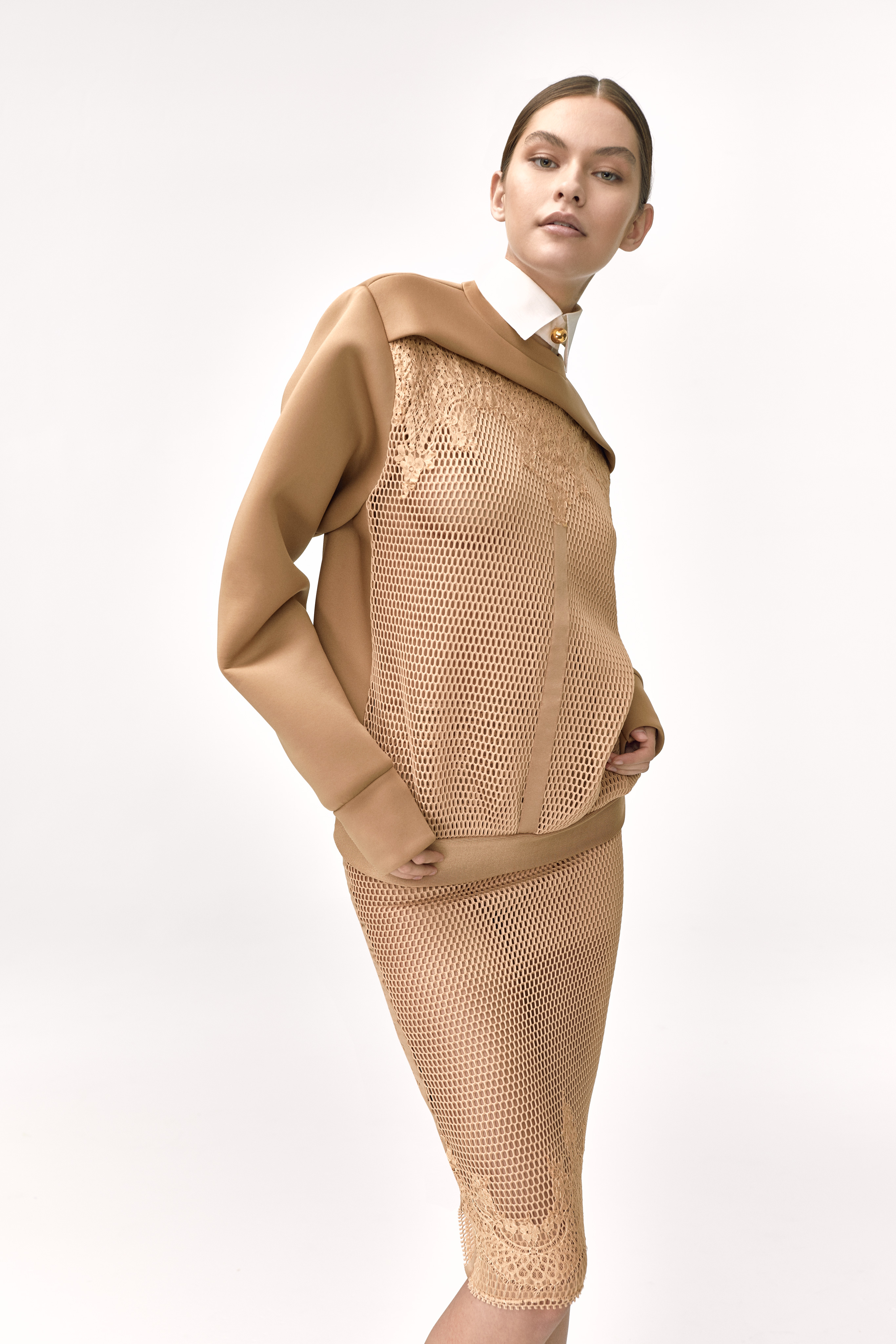
“I have seen so many collections, so many shows but I think seeing Sukeina for the first time was a big surprise.” Alara reminisces, adding; “I felt it wasn’t just something that you see and you forget. The level of craftsmanship and the level of work that is done on the clothes compared to a lot of the brands that we have out there today, African designers, European or American designers you know…that is what drew me to the brand, and what drew me to Omar is his mind and his level of thinking and the way that he works.” Their collaboration is more than a mutual admiration society. Alara is keen for Sukeina to optimise all the current green shoots in the company’s line of sight and for Salam he now has a professional, creative journeyman who understands the brand’s DNA and his own personal desire to never compromise. Craft, a capstone in much of his work, remains centre stage, but in Alara’s interpretations it is modernised and made relevant for women today.
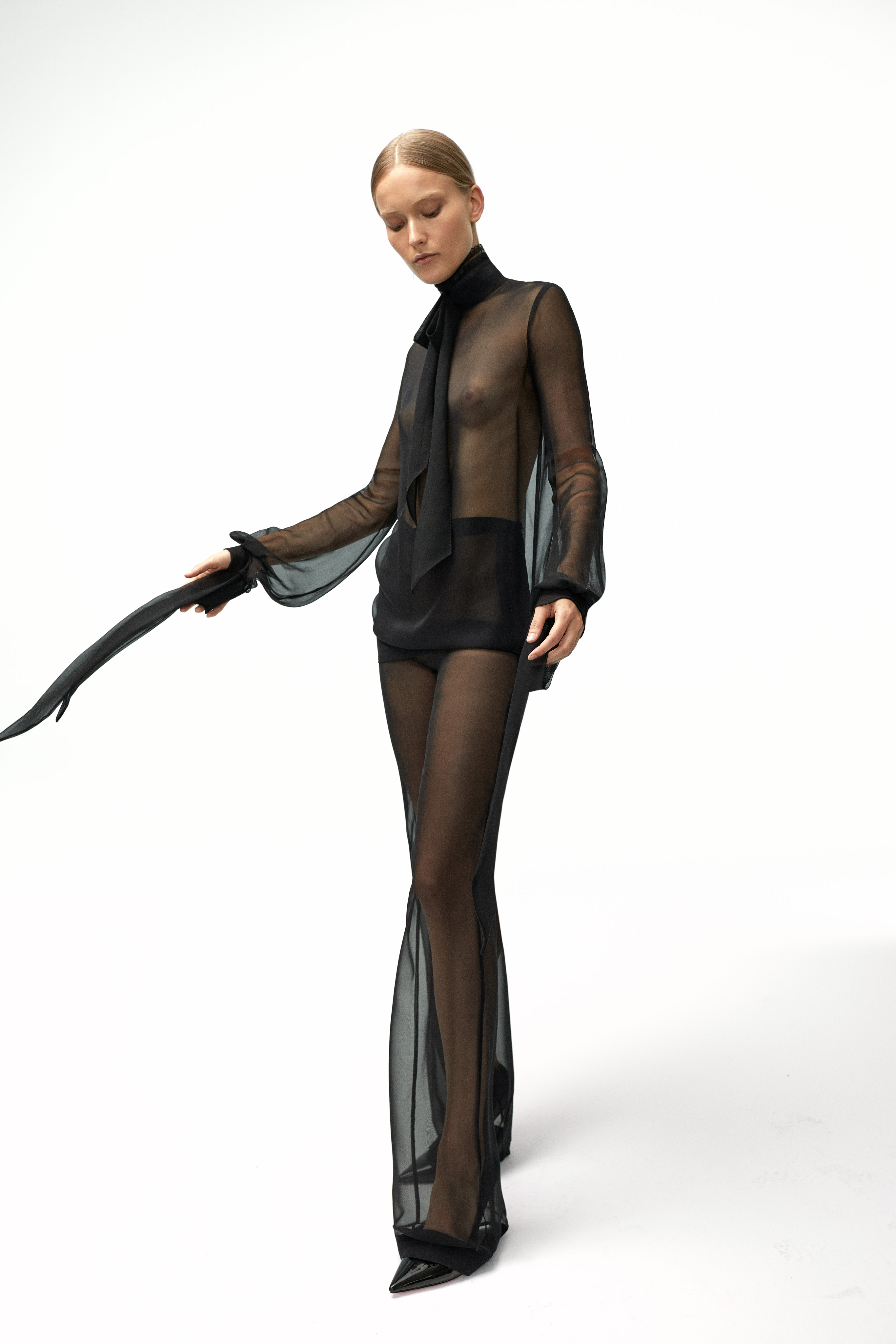
Although the brand is young, Salam is still mindful of legacy building and of Sukeina upholding its core values for years to come. Fashion’s woeful reputation as one of the environment’s worst abusers and contributors to the climate emergency has prompted him to rather than clumsily jump on the sustainability bandwagon, champion mindful purchasing, something which is at the heart of how his collections are conceived and how he anticipates women will wear them. He expands “By going back to creating products that you don’t need to have hundreds of but just ten of because they mean something to you [and], by going back to true craftsmanship with integrity, the true meaning of clothing, clothing that perhaps won’t cost the price of a salad but won’t be exhausting and polluting the planet less will be upheld.” Buying less and only what you will love forever is a mantra that not only those wedded to minimalism can afford to adhere to in our current times, but in Salam’s hands, perhaps because of the kind of pieces he creates, it doesn’t feel like a sentence to be endured. But arguably the most enduring of all Sukeina’s legacy building projects, beyond the brand’s commercial ambitions is challenging dated and inaccurate notions of what a fashion house with an African creative director should be producing or have as it’s central design thesis. Salam adds, “We don’t need to flex and say we are better than anyone. It is not about being better it is about being true to who we are. We are asking politely but firmly for the opportunity to share that with the world as our contribution to humanity.”
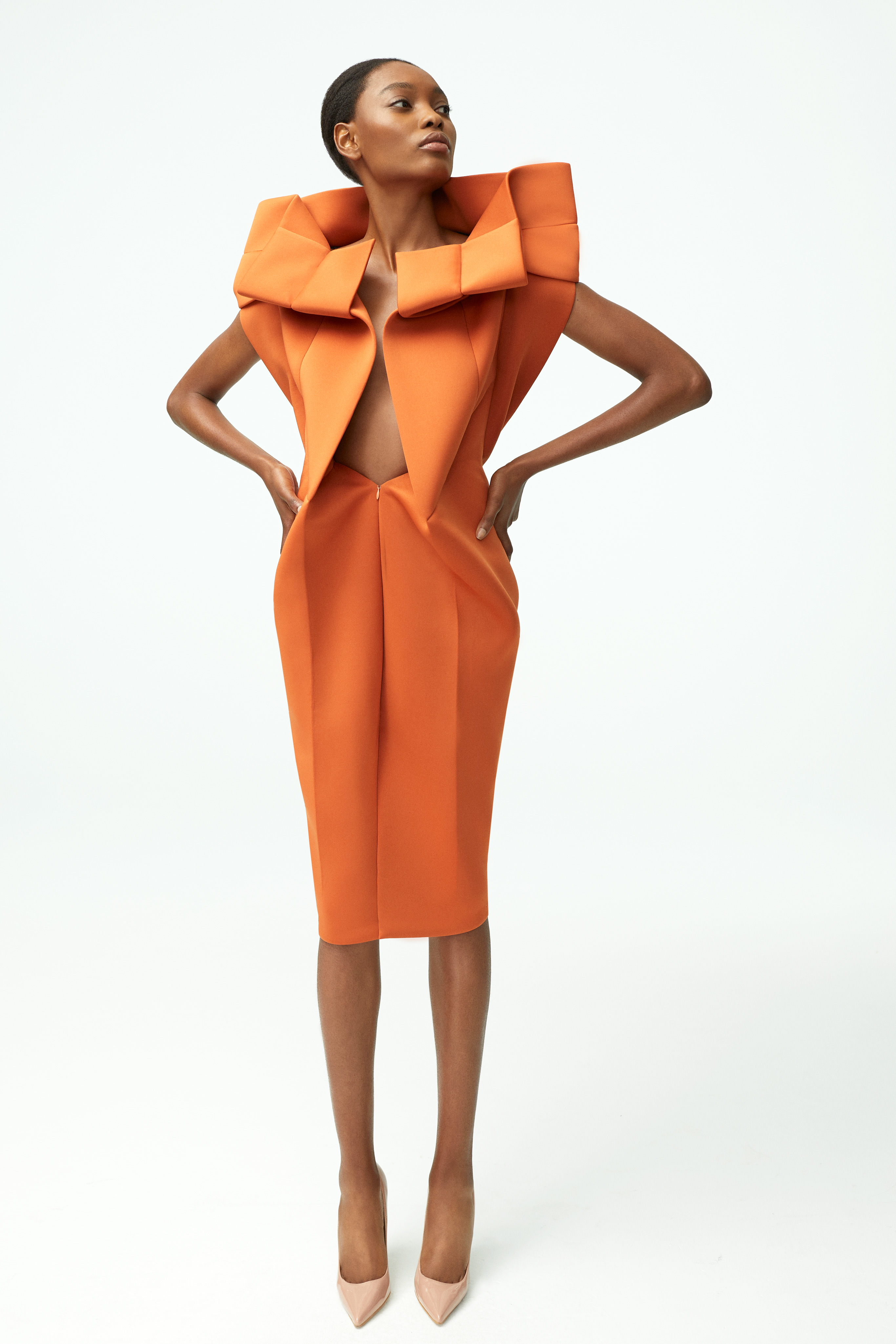
The last few years has seen a steady expansion in terms of numbers operating successfully, and celebration in terms of media coverage, of African fashion brands. Furthermore, in response to the growing appetite from consumers globally for African fashion, online retailers such as Industrie Africa, Onchek and Avivere have launched. Africa has gone from being ‘hot right now’ to being ‘too hot to ignore’ and it is a trend that has traveled across other creative disciplines beyond fashion to include jewellery, music and fine art . But for all the commercial wins there is still a darker reality for brands that have African roots, brands such as Sukeina, and it lies with notions of respect, perception and positioning. Throughout our conversation, Salam, a measured, intellectual man of the world, did not talk of a fashion system ‘out to get him’, or of a desire to be on any of the hastily compiled lists of black designers and black owned businesses that emerged in the aftermath of George Floyd’s murder, but he has had to be deliberate and consistent in his upending of assumptions and crystalline clear in how he presents his brand across all touch-points. There is a growing cadre of creatives who are choosing this modus operandi rather than slogans, hashtags and call out culture to make a name for themselves and their brand, and more pertinently to create a space for existence, without the historic pejorative noise that is the mood music of being black from a global systemic and socioeconomic standpoint. Salam is firmly of the school that his oeuvre will speak for itself. That his raison d’être of being the aider and abettor of women discovering and displaying their many selves and feeling powerful and magnificent in the process is enough. For Salam, real validation doesn’t live in the land of likes, but in the closets of the growing number of women who choose Sukeina pieces as the lens to illustrate their passions, peculiarities and truths
